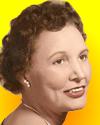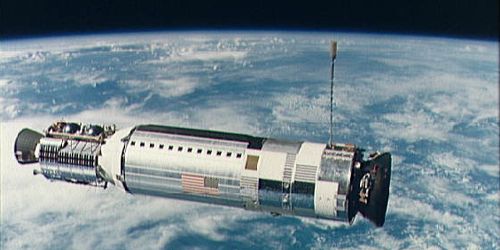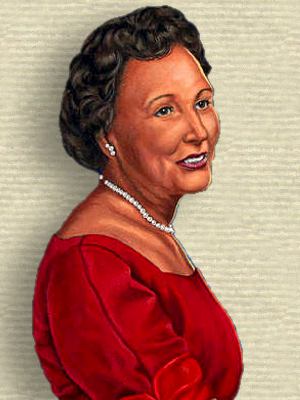 (source)
(source)
|
Mary G. Ross
(9 Aug 1908 - 29 Apr 2008)
American engineer who was a citizen of the Cherokee nation, and the first known Native American female engineer.
|
Mary Golda Ross
A Pioneer in Aerospace Engineering
In the annals of aerospace history, few have broken barriers quite like Mary Golda Ross. As the first known Native American female engineer she was a key player in the nascent American space program. Her story offers inspiration to underrepresented groups in STEM fields, and is a fine example of the intersection of indigenous culture and modern science. Ross’s Cherokee heritage significantly influenced her journey and worldview. By examining her life’s arc, one can appreciate the profound impact of her Cherokee roots on her scientific achievements.
Early Life and Background
Mary G. Ross was born on August 9, 1908, in the small town of Park Hill, Oklahoma. She was a proud member of the Cherokee Nation. This connection was not merely ancestral; it was deeply woven into the fabric of her identity. Her great-great-grandfather, John Ross, served as the Principal Chief of the Cherokee Nation during one of its most challenging periods: the tragic Trail of Tears. This legacy of resilience and leadership was a guiding force throughout Ross’s life.
Cherokee values emphasize the importance of harmony, balance, and community. The tribe has a rich oral tradition filled with stories that often weave together observations of the stars, the Earth, and the intricate balance of nature. Growing up, Ross was imbued with this profound respect for the universe—a perspective that later found resonance in her aerospace endeavors.
Scientific Preparation: Education and Early Career
Even in her early years, Ross displayed an affinity for math and the mysteries of the universe. Her family recognized her potential and emphasized the importance of education, grounding her in both her Cherokee heritage and Western education.
Ross’s love for mathematics led her to attend Northeastern State Teachers’ College (now Northeastern State University) in Tahlequah, Oklahoma, where she earned a bachelor’s degree in mathematics in 1928. She began her professional journey as a statistician and teacher but sought further knowledge, earning a master’s degree in mathematics from Colorado State College of Education.
Her career took a significant turn in the early 1940s when she secured a position at the Lockheed Corporation as a skilled mathematician. The challenges of World War II meant that the aerospace industry was rapidly evolving, and the Lockheed Corporation was on the forefront of this transformation. Recognizing her talent and potential, Lockheed sent Ross to the University of California, Los Angeles (UCLA) to earn a classified postgraduate degree in engineering, a field then dominated by men.
Innovation in Aerospace
At Lockheed, Ross was one of the 40 founding engineers of the Skunk Works project, a secret division dedicated to developing advanced aircraft designs. Ross quickly became a pivotal member. Under the leadership of the legendary Clarence “Kelly” Johnson, the Skunk Works was responsible for numerous innovations in aerospace technology. Being part of an elite group of engineers at Skunk Works meant that Ross was constantly in synergy with the best minds in aerospace, together shaping the future of aviation and space technology.
The myriad endeavors that Ross tackled pushed the boundaries of aerospace technology. One of the early standout initiatives was the development of the U-2 reconnaissance plane, a high-altitude aircraft that played a significant role during the Cold War. Ross’s expertise in trajectory analysis was critical in optimizing the plane’s flight path, ensuring it remained undetectable to radar systems. Beyond the U-2, she made her mark on many classified projects, each leveraging her unique blend of mathematical brilliance and engineering acumen.
Ross’s specialty was celestial mechanics, trajectory analysis, and satellite orbits. These areas were especially critical in the late 1950s to late 1960s, after the Soviet satellite Sputnik was launched on 4 Oct 1957. This kick-started the early days of rapidly evolving space exploration and the development of intercontinental ballistic missiles.
The technical prowess Ross applied was pivotal for the preliminary design concepts of interplanetary space travel, manned and unmanned Earth-orbiting flights, and the earliest studies on orbiting satellites. In celestial mechanics, for instance, she provided foundational knowledge for determining the paths spacecraft would follow when leaving Earth’s gravitational influence. This was particularly crucial for interplanetary missions, where precise calculations could mean the difference between success and failure. Additionally, her studies on satellite orbits informed the launch strategies for a generation of satellites, both for defense and civilian applications.

Her work contributed to the Agena rocket project, which produced a crucial upper-stage vehicle used in many satellite launches and human spaceflights. The Agena spacecraft’s success was a testament to Ross’s skill and innovation.
In a male-dominated realm of aerospace engineering during the mid-20th century, Ross encountered her share of challenges. As both a woman and a Native American, she was a rarity in the engineering labs and project meetings. Navigating occasional biases and preconceptions, Ross demonstrated an unwavering commitment to her work, letting her accomplishments speak for her. Her peers, eventually recognizing her prowess, came to value her insights immensely. This journey, though fraught with challenges, is a testament to Ross’s resilience and determination.
Ross was not just involved in hardcore engineering and mathematical calculations; she was also a visionary. She penned numerous academic papers on space exploration and was among the authors who laid the groundwork for spacefaring missions to Mars and Venus.
Legacy and Later Life
Mary G. Ross was passionate about supporting underrepresented groups in STEM. After retiring in 1973, Ross’s connection to her Cherokee roots intensified. Recognizing the dearth of educational opportunities for indigenous communities, she turned her energy to advocacy. She ardently championed education for American Indians, promoting the blending of traditional knowledge with modern education, a viewpoint that sprang from her own experiences. For Ross, it was crucial to elevate indigenous perspectives within the broader scientific community.
To advance this goal, Ross supported scholarship programs specifically tailored for Native American students venturing into STEM fields. She also collaborated with educational institutions, offering her insights to mold curriculums that integrated traditional indigenous knowledge with modern scientific education. Through seminars, workshops, and mentorship programs, Ross dedicated her post-retirement years to uplift the next generation of Native American scientists and engineers.
Ross passed away on April 29, 2008, leaving behind a legacy as a pioneer in her field. In 2019, the U.S. Mint announced a new coin design featuring Ross as part of its Native American $1 Coin Program, cementing her place as an iconic figure in both Native American history and the realm of aerospace engineering.
The story of Mary Golda Ross serves as a testament to what is achievable when talent meets opportunity. From the rolling plains of Oklahoma to the forefront of aerospace innovation, Ross’s journey was marked by challenges she consistently overcame. Her Cherokee heritage, with its reverence for the cosmos and emphasis on balance, complemented and enriched her contributions to aerospace engineering and space exploration. In Ross, we see a beacon for both the Cherokee Nation and the scientific community—a testament to the strength and depth that diverse backgrounds bring to innovation. Progress is built upon the combined strengths of diverse perspectives.
- Science Quotes by Mary G. Ross.
- 9 Aug - short biography, births, deaths and events on date of Ross's birth.
- Power in Numbers: The Rebel Women of Mathematics, by Talithia Williams. - book suggestion.





